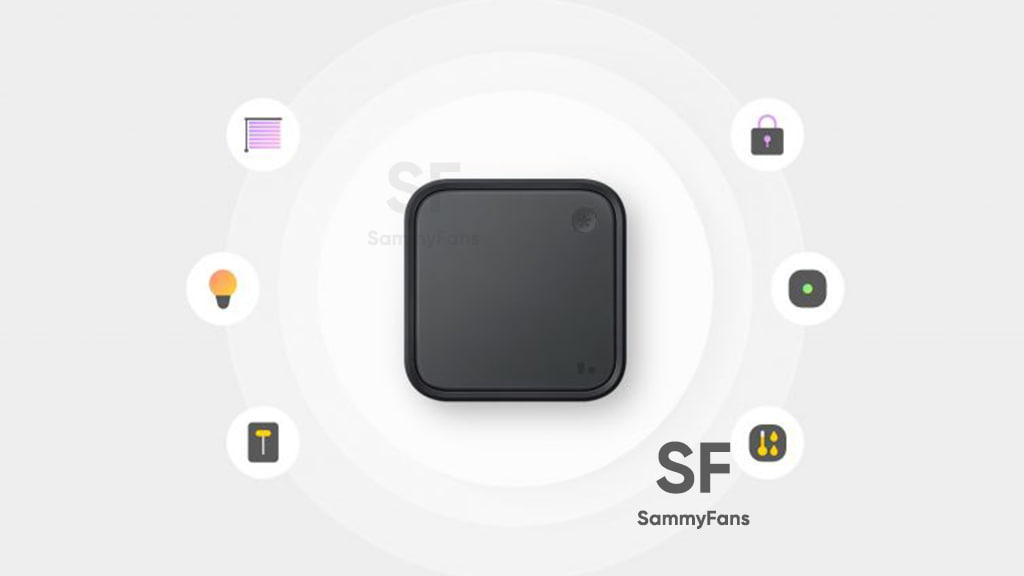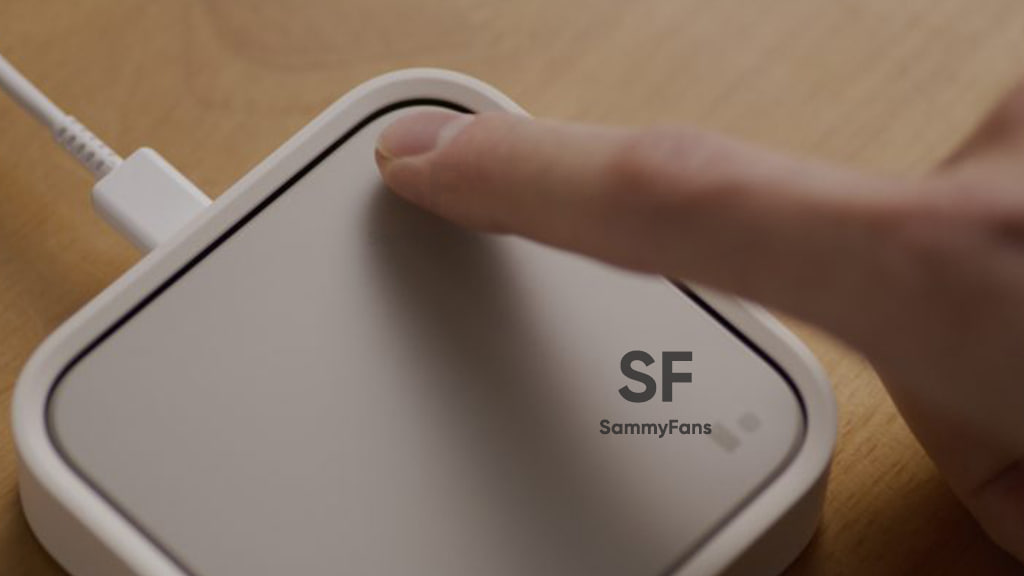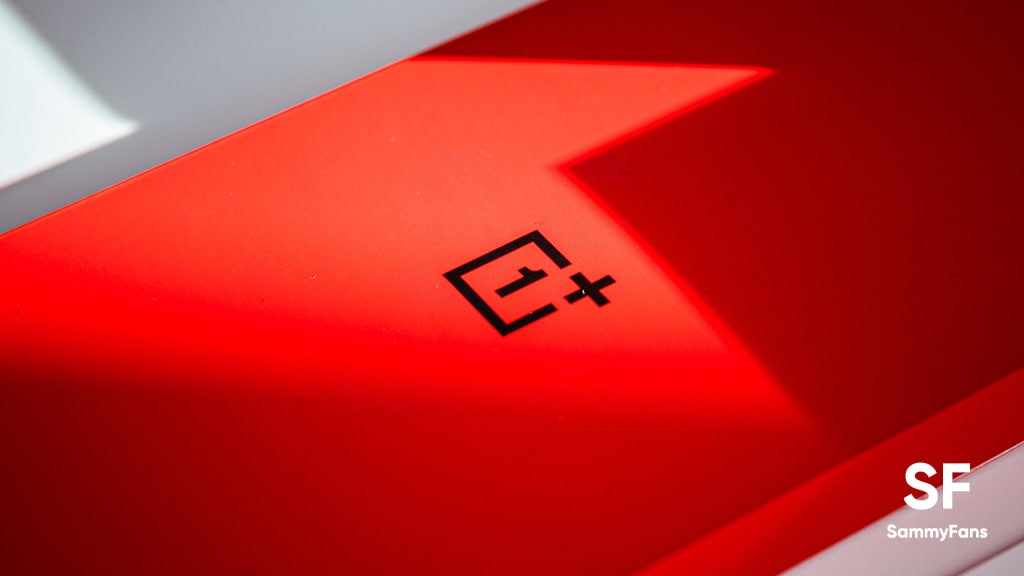News
Samsung launches SmartThings Station at CES 2023

Samsung today introduced SmartThings Station at CES 2023 to make smarter homes accessible for everyone. Through integration with the SmartThings app on Galaxy smartphones, you can easily find and manage your smart devices around home more accurately.
Follow Sammy Fans on Google News
Samsung SmartThings Station will be unveiled in Korea and the US this month. It will offer two color options – Black and White, which will be available from early February 2023.
Join SammyFans on Telegram

Samsung SmartThings Station
SmartThings Station allows users to access smart home functions from SmartThings more conveniently and quickly. By linking to the SmartThings app on your Galaxy smartphone, various user routines, such as going to bed and waking up, can be easily performed with a single button.
You can easily add a device to the SmartThings app by scanning the QR code of a device with the camera of a Galaxy smartphone. Furthermore, several smart devices such as smart TVs, washing machines, refrigerators, air conditioners, lights, curtains, and power outlets can be turned on, off, and operated from the app.

Additionally, it also supports wireless charging up to 15W and through this users can charge their Galaxy smartphones and Galaxy Buds series. Furthermore, the user can set up a preset routine to run with wireless charging.
News
OnePlus joins Android 15 race with OxygenOS 15 announcement; Samsung lagging due to delay in One UI 7

Samsung and OnePlus, two companies in the Android ecosystem, are taking different approaches with their Android 15 update rollout plans, and tech fans are talking about it.
OnePlus has officially confirmed, via an announcement on its social media account and its community forum, that the Android 15-based OxygenOS 15 beta program is coming on October 24th, 2024. The upcoming OxygenOS update will probably bring a refreshed design inspired by iOS, featuring fresh lock screen customization choices and an updated UI.
Devices like the OnePlus 12 and OnePlus Open will be first in line to get the OxygenOS 15 update by mid or late November, with other models following soon after.
With the OxygenOS 15 announcement, OnePlus now joins other leading manufacturers in rolling out Android 15. The smartphone companies like Google, Vivo, Motorola, Nothing, and ROG have already started the stable or beta rollout.
However, Samsung, a key contributor to the Android OS ecosystem, has delayed the One UI 7.0 beta program, causing it to lag in its update schedule. This delay has upset the Samsung Galaxy users waiting for Android 15, as Samsung is taking time to ensure the OS stability rather than rushing updates.
While Samsung hasn’t rushed to release a beta or full update like OnePlus, the company is expected to bring significant visual and functional changes.
As per official information, the Android 15-based One UI 7.0 stable update won’t be available until 2025. The company is going to bring the stable full-featured One UI 7 with the Galaxy S25 series next year.
News
Samsung launches 24Gb GDDR7 DRAM with record speed for AI, GPU

Samsung developed the 24Gb GDDR7 DRAM for AI and next-gen GPU. The company’s advanced GDDR7 memory chipset introduces faster speed and enhanced power efficiency to become an optimum solution for next-generation applications.
The South Korean tech giant also announced that the validation for the 24Gb GDDR7 in next-generation AI computing systems from major GPU customers will begin this year, with plans for commercialization early next year.
24Gb GDDR7
Thanks to high capacity and powerful performance, Samsung’s latest memory chip will be widely utilized in various fields. It’s a pretty big induction in fields that require high-performance memory solutions, such as data centers and AI workstations.
Beyond that, the GDDR7 will also be utilized beyond the traditional applications of graphics DRAM in graphics cards, gaming consoles and autonomous driving. It minimizes current leakage by using power gating design tech to boost operational stability.
Samsung claims that the GDDR7 achieved industry-leading speed for graphics DRAM of 40 Gbps, a whopping 25% boost over its predecessor. The performances can also be enhanced to up to 42.5Gbps, depending on the usage environment.
The company has also expanded mobile SoC-inspired methods such as clock control management and dual VDD design. It’s aimed at reducing unnecessary power consumption, improving power efficiency by over 30%.

News
South Korea tightens efforts to protect Samsung and others from tech leak

Samsung faced a key technology leak that could have ruined its semiconductor investments and efforts. As cases surface, South Korea vowed to tighten tech leak prevention to safeguard home-grown innovation by Samsung and others.
Reuters reports that South Korea is preparing big decisions to protect Samsung and other local firms from the leak of key tech and business secrets. The Korean govt will prepare stronger measures to shield advanced technologies from leak.
A former Samsung employee was recently arrested over allegations of stealing semiconductor information. The person was accused of transferring key semiconductor secrets to a Chinese firm as part of establishing a facility.
South Korea’s finance minister announced that the Government is working on the preparation of stronger measures to prevent overseas leaks of business secrets amid intensifying competition for advanced technologies.
“We will prevent illegal leaks of advanced technologies to raise the global competitiveness of our companies and strengthen technology leadership,” Minister Choi Sang-mok said.
Korean FM disclosed that the government will set up a “big data” system. It will be aimed at preventing tech leaks at the patent agency and bringing new regulations to ensure stronger punishment and penalties for culprits.












